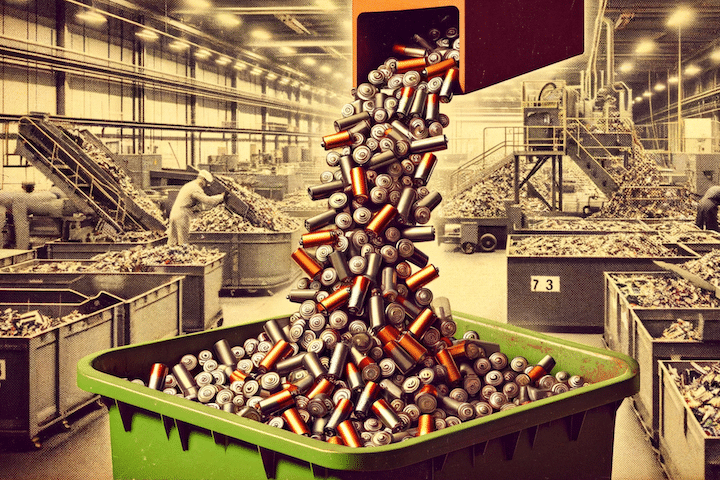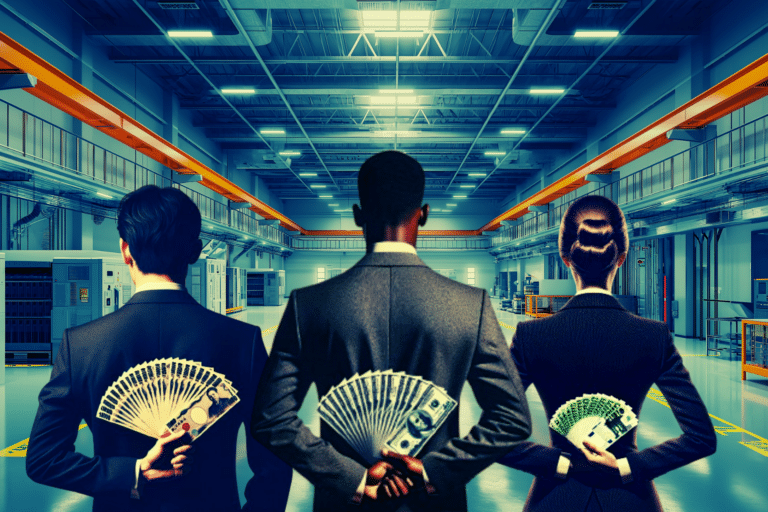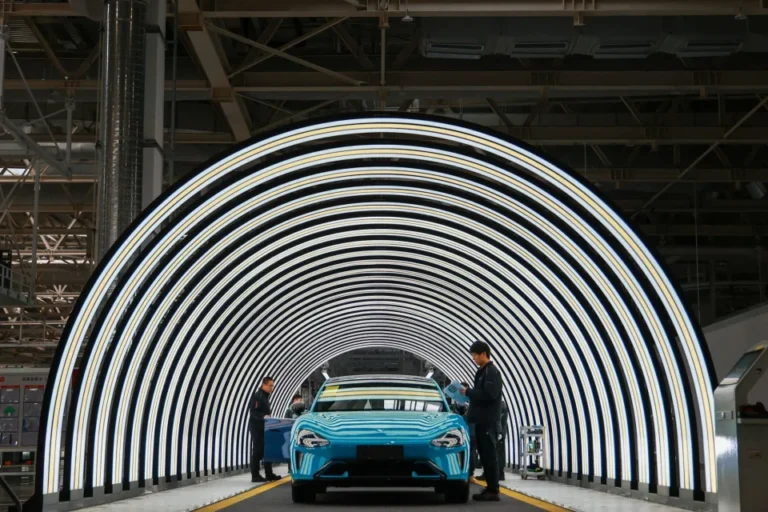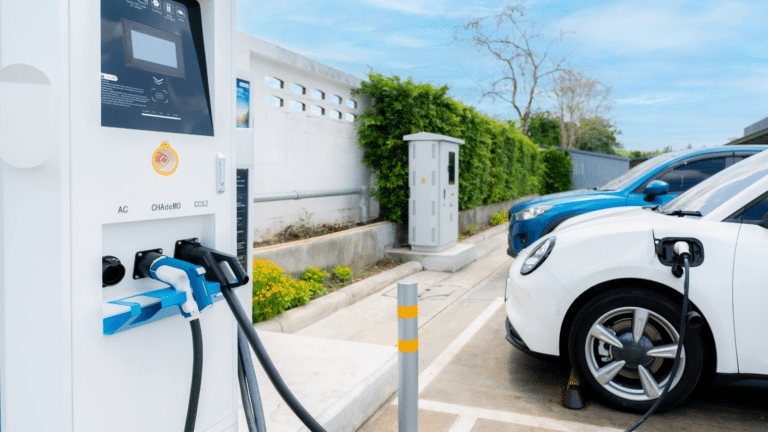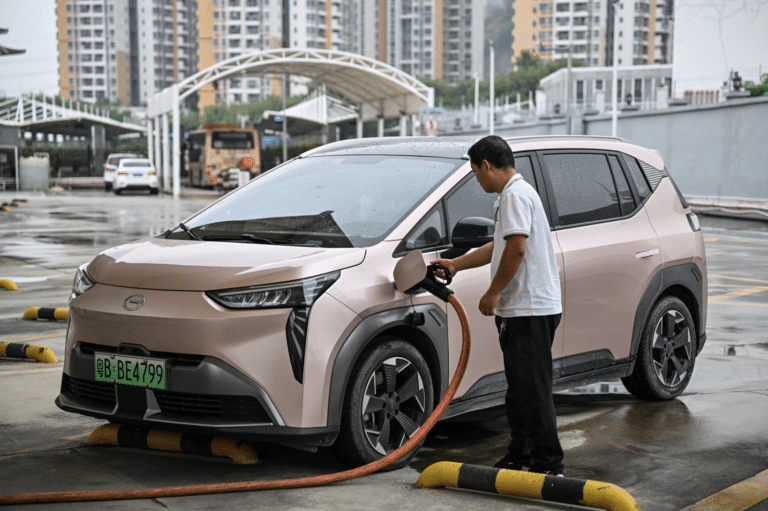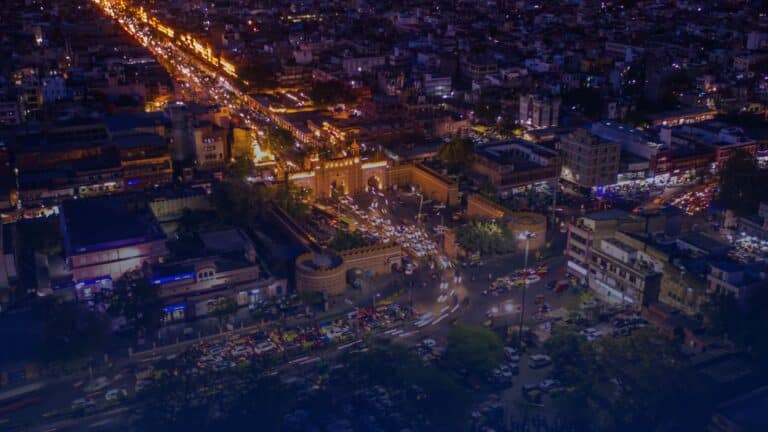Melissa Lott: [00:00:02] So I recently hopped on this phone call with my colleague Kirsten and producer Daniel. Hey, what’s up? Hey. What you doing? You got a minute? [00:00:11][8.6]
Kirsten: [00:00:11] We have a minute. [00:00:12][0.8]
Melissa Lott: [00:00:13] So I’m looking at flights and I’m talking to Daniel, and we’ve gotten into a loop talking about flights and emissions and offsets, and I just. I’m phoning a friend. Can we borrow your brain for a minute? Can you hop on Zoom and, like, grab your mike? Is your mike nearby? [00:00:28][14.7]
Kirsten: [00:00:29] Yeah, for sure. And also, why are you talking to Daniel about point? [00:00:33][3.2]
Melissa Lott: [00:00:34] Come on. We’re we’re talking about the Sustainable Aviation Net zero aviation episode. And I also am booking flights for the holidays because, you know, my family’s like all over the world. So we’re trying to figure out what we’re going to do. But I keep coming back to like, we haven’t seen our family in a couple of years, Like it’s a big deal. We want to see them for the holidays, but. I don’t know. I just keep thinking about. Should I even be flying? This is the big switch. A show about how to rebuild the energy systems that are all around us. To slow climate change, we need to transform our buildings, homes, cars and the economy as quickly as possible. But how do we do it right? I’m Dr. Melissa Lott, and I’m the director of research at Columbia University’s Center on Global Energy Policy. And I study the technologies and systems that power our world. On today’s episode, Aviation. [00:01:34][60.0]
Kirsten: [00:01:38] Hey, guys. What’s up? [00:01:38][0.6]
Melissa Lott: [00:01:39] Hey. [00:01:39][0.0]
Kirsten: [00:01:40] Well, okay. What are we doing? [00:01:41][0.8]
Melissa Lott: [00:01:42] Sorry. Okay, so I was telling Daniel about how I’m booking flights for us for the holidays, because, you know, I want to see family, and I’m the family flight booker, and I’ve got a lot of guilt, which probably doesn’t surprise you. I really believe in this net zero future and how we need to get there fast. And so I feel like we need to do something to actually reduce our footprints around this. But reducing our footprints doesn’t mean not flying. It means flying, but doing it better. [00:02:06][24.5]
Kirsten: [00:02:07] Because like you need to fly sometimes. I mean, you have family across the world. So do I. I like to see my friends and family. It’s something that I really enjoy doing. Also, just like a vacation. I want to take a vacation every once in a while. Should I feel badly about that? It sounds like you do a little bit, but like, should we? Is that necessary? [00:02:25][17.9]
Melissa Lott: [00:02:26] Yeah. I mean, I do definitely have I’ve got some guilt, but at the same time, like, I want to see my family and I’m going to see my family. So if I’m going to fly, if that’s where we start now, what can I do? The thing is, as you’ll hear in this episode, this is a really big challenge to solve, and we just don’t have this clear pathway to net zero aviation yet. But that’s not stopping people from trying out different solutions. For example, Kirsten pointed out that Google Flights now has this feature that lets you estimate the carbon emissions of flights. [00:03:01][35.2]
Kirsten: [00:03:02] We are starting to see more transparency when we book flights. I notice that on Google it actually now tells you what the average emissions of your flight is and it tells you like if you’re flying a more direct route, it’ll say more or less emissions. [00:03:16][13.3]
Melissa Lott: [00:03:17] So we don’t have net zero aviation today, but there are other solutions that we can try in the meantime, like these carbon emissions estimates. And the question is how well do these things work? Ultimately, what I found was this one British Airways flight, a direct flight from Austin to London. So it’s telling me that the flight from Austin to Heathrow Direct is 1017 kilograms of CO2 emissions. That’s what I’m actually looking to offset. And by offset, I mean, I want to purchase something called a carbon offset. This is another one of the solutions that people have tried. You see, there are these projects around the world that work to avoid carbon emissions. In some cases, these projects are aimed at like helping trees and forests soak up carbon and keep it there. And for some others, the projects are supporting zero carbon power like wind turbines that can replace fossil fuel power plants. There are organizations that measure the emissions avoided by these projects. For every metric tonne of avoiding carbon emissions, companies can sell an offset, and by buying it, I’m getting this promise of avoided emissions in exchange for money to support the forest or wind turbines or whatever, and airlines make a big deal about buying them. [00:04:24][66.8]
Delta newsreel: [00:04:29] We can make a difference because Delta has committed to becoming the world’s first carbon neutral airline on a global basis. We believe you shouldn’t have to choose between seeing the world. And saving it. [00:04:45][16.6]
Kirsten: [00:04:48] 2007 marks ten years since Virgin Australia launched the world’s first government certified airline Carbon Offset scheme. [00:04:55][7.0]
Jetblue newsreel: [00:04:55] JetBlue reduces these emissions in many ways, like adding special wingtips called chocolates to our A320s, supporting large scale tree plantings and by backing recovery technology that turns methane emissions from a landfill in Utah into a clean energy source to help power homes. [00:05:11][16.1]
Melissa Lott: [00:05:13] But we were left with a bunch of questions. So first, Google Sites was giving us this ballpark in terms of which flights were lowest carbon. But what if we actually called up the source and we asked airlines, what are your lowest carbon flight options? And then for all these offsets that the airlines are talking so much about, could we just purchase them one by our tickets, kind of like an extra piece of luggage? And where does our money actually go to explore these questions? We volunteered our producer, Daniel, to call up some airlines and see how what kind of low carbon options. We really have as many as you want to. I’m just curious. But you’re going to find. [00:05:48][35.3]
Kirsten: [00:05:49] It doesn’t matter who you’re going to end up talking to. Maybe someone will have a better answer than someone else. Call a bunch of airlines and kind of see what they tell you. [00:05:56][7.1]
Daniel: [00:05:57] Oh, man, I like it. [00:06:01][4.0]
Kirsten: [00:06:01] Sounds like fun, right? When I. [00:06:02][0.9]
Daniel: [00:06:02] Say, Well. [00:06:03][0.7]
Daniel: [00:06:06] Let me see what I can do. [00:06:07][1.5]
Melissa Lott: [00:06:08] Awesome. And can you let me know soon? Because I do actually need to book some flights before prices go up. So. [00:06:16][7.2]
Daniel: [00:06:23] My main question is, do you have any idea which of these flights are the lowest carbon options? [00:06:30][7.2]
Phone call: [00:06:31] That was a no my case. That question wasn’t on my case. Yeah, that’s a hard one. Hold on. [00:06:47][16.0]
Daniel: [00:06:49] Okay. Thank you. [00:06:50][1.4]
Phone call: [00:06:51] You just need to search the carbon choice carbon offset program by United. [00:06:55][4.8]
Daniel: [00:06:56] And that one. That one’s for, like, for, like, corporations and stuff. [00:07:01][4.1]
Phone call: [00:07:01] That’s right sir. [00:07:02][0.3]
Daniel: [00:07:03] So I wouldn’t necessarily. Would I be able to, like, purchase from it as an individual? [00:07:09][6.5]
Phone call: [00:07:10] No, sir. Actually, to be honest, I do not really know about the offset. More like a different language that I don’t know. [00:07:19][9.3]
Melissa Lott: [00:07:26] So we’ll get back to Daniel’s airline calls later in the episode. But for now, we’re going to zoom out and take a look at the big picture and look ahead to a future where flying with zero carbon emissions is actually possible. What’s it going to take? [00:07:37][11.5]
Alejandra Uranga: [00:07:38] If you look at the sky at any time, there’s like thousands and thousands of airplanes flying. And so the issue there is if airplanes last for 20 years, that means if you want to change something in 20 years, you better start now. [00:07:52][14.0]
Melissa Lott: [00:07:53] Alejandra Uranga is an engineer and assistant professor who studies aviation technology at the University of Southern California. So just starting out, when we talk about decarbonizing aviation, can you give us a sense of scale of what we’re talking about? So percent of total emissions, how many planes like how big is this thing we’re talking about? [00:08:12][18.6]
Alejandra Uranga: [00:08:12] Sure. So we’re talking about 33,000 airplanes in the global fleet, more or less. And that doesn’t sound like a lot, but they actually fly all the time. So you’re talking 8 trillion passengers, kilometers flown per year. That’s 8 trillion. So 8 million of millions passenger kilometers every year. Now, the issue or maybe the future problem or the reason we’re worrying about this now is that aviation demand is growing. And so it grows constantly like 5% per year every year, almost no matter what happens. Except for the pandemic, we don’t know what’s going to happen. But every all the crises will just go for the bump and it just keeps going. And so the share of aviation actually going to increase. [00:08:56][43.9]
Melissa Lott: [00:08:57] Can you help us to understand and just compare if I was going to fly from one city to another versus driving, what are we talking about in terms of emissions, energy, use, time, these types of factors, Can you just give us an idea of how to think about it versus our other options? [00:09:11][13.4]
Alejandra Uranga: [00:09:12] I guess it goes back again to one of the myths. Some people say just stop flying. Right? And that just is not that simple. Aviation does actually produce a lot of value to society in terms of do you fly or do you drive? So it turns out driving can be worse than flying. So to give you a general idea, modern airplanes burn about three liters of jet fuel per 100 passenger kilometers. And in terms of what you use to go, car mileage is about 70 to 80 miles per gallon. So they’re actually extremely efficient. So if you’re going to take your car from California, so I’m going to say Los Angeles to San Francisco and drive on your own, you’re better off taking an airplane. You’re going to produce less pollution. The problem or the reason we have this myth is because you wouldn’t drive from Los Angeles to see you in New York. I wouldn’t drive that. Right. But I actually would fly. And so that tends to push people to go longer distances, which eventually has a bigger impact. But in terms of efficiency, aircrafts are airplanes are extremely efficient, more than more than your Prius. So you can put two people in a Prius and they’ll be the same as all those people flying coast to coast, for instance. There are some routes that are less efficient, but then that depends on broad planning and special conditions and how many people fly there. Most of the emissions from aviation, 80% of the emissions from aviation actually come from long distance flights. And so what would they find? Long distance is more than 1500 kilometers or 900 miles. And so those are routes that you wouldn’t drive. You’re going to say you’re not going to say, I’m not going to fly. I’m going to drive instead 900 miles or you cross the oceans. You’re not going to take a boat. It’s not going to go back to I’m going to take a boat and spend two or three weeks and then get to Europe. Right. So long distance flight is actually irreplaceable. Like, what are you going to do instead of taking that long distance flight? [00:11:19][127.6]
Melissa Lott: [00:11:20] So in a dive into the details on what steps we can take to reduce the carbon intensity of aviation, so how do we find this net zero future? But before we go into each of the details, could we step back and think about at a high level, what are the big steps, the big levers that we have to decarbonize planes to decarbonize aviation? [00:11:41][21.3]
Alejandra Uranga: [00:11:43] I think basically there’s like three big steps and each step has details in and so on. So first is one particular route of aviation sector is that the only energy source is hydrocarbon fuel. Mm hmm. Aside from experimental airplanes or new developments, every time you fly, you’re burning hydrocarbons. We have nothing else. Just the same way we had nothing else for cars. Like 20 years ago. You wouldn’t be able to buy an electric car 30 years ago. So the first thing is, we need to find a replacement energy source for airplanes. And then you need to develop the specific technologies to be able to use that alternative source of fuel, whether it be batteries. Different types of fuels. We can talk about biofuels. I say yes. Anything that you do that is not hydrocarbon, you’re going to have to develop some technology to actually leverage it. Then you can also, in parallel, make airplanes more efficient. And that’s also kind of a technology development. And then the first step and the important one is you need to adopt those new technologies. You can have the technology there, but it’s just standing on a bench and it’s not being used. That’s not going to help. And we go back to the question from before is how long does an airplane actually stay in the skies? 20 years. Right. So you need to develop those technologies and you need to adopt them. And then nearby near, you’re going to need to renew the fleet at 2 to 3, 4% a year. That’s going to take quite a number of years. But you can get away with that without those three steps. Find an alternative, develop the technologies new to the alternative, and adopt those technologies, bring it out in the into the fleet. [00:13:26][103.0]
Melissa Lott: [00:13:27] When we think about the planes that are in the air right now, we think about getting on those planes. What are the ways that we can make existing technology more efficient or less carbon intense or both? [00:13:37][10.3]
Alejandra Uranga: [00:13:38] The main ones are fly slower. So just like everything energy, if you go slower, you need less energy for it. The question is, are you willing to spend an extra 15 minutes on your flight? Another big thing you can do is change operations. So there’s ways to make aircraft operation more efficient in terms of not just how long you taxi. So if it if you take off from JFK and if you stay 20 minutes on the ground waiting to take off, there’s 20 minutes of either and it’s still some fuel. It’s not a lot, but it’s something. And then when you’re thinking about landing on a busy airport. Like if you stay 15 extra minutes in the air because you’re just waiting for your turn. That’s a lot of wasted energy. And those are things are, in theory, can be easily cut, at least in theory, because it doesn’t require any technology. It just requires new operations. [00:14:34][55.9]
Melissa Lott: [00:14:35] What about the technological changes that we might see, let’s say in the medium term? I won’t say short term, not tomorrow, but that we could see in the medium term. I’m thinking about all these headlines around sustainable aviation fuel and how does that compare to jet fuel? What about biofuels, electrification? I mean, how do all these come in in the medium term? [00:14:52][16.6]
Alejandra Uranga: [00:14:52] Sure. So let’s let’s take them one at a time, I guess. Or maybe I’ll take a tour. So a sustainable aviation fuel is what we call SUVs, S.A.S. and biofuels. Those are similar. And the idea behind that is they actually have a much lower carbon footprint than jet fuel, hydrocarbon fuels by about 80%. So a typical SAF produces 80% of the emissions by by volume or by how much you burn of that fuel compared to regular jet fuel. So that’s huge. And the way they work is that the way they’ve been designed is it’s a drop in fuel, what we call it. So you can just replace the fuel with this stuff and do nothing else technology wise. So it’s the same engine is the same system. It’s just bringing in different type of fuel. So if you were to replace all the fuel with a serve, you would produce 80% less emissions, which is huge. Now, of course, there has to be a downside. Otherwise we would have SUVs everywhere. And the Denso is currently it’s about eight times more costly to produce this sustainable aviation fuel than it is to produce jet fuel. So the question is, when we go back to thinking, can people do something about it? How much does that matter? Say you’re going to visit your uncle and you pay $500 for your flight? Will you pay eight times more? Would you pay $4,000 on mostly grass or is going to be No. So if you were willing to pay eight times more, we would already have a solution. Now there is research and technology developments and these types of fuels are going to be cheaper and cheaper to produce, mass produce, scale them and so on. It will get us somewhere, but it won’t get us to zero emissions. There’s still hydrocarbons is like algae and other things, and basically they still have a lot of energy in it, like jet fuel has. That’s why we use oil. That’s why we use hydrocarbons is just very high density energy in terms of volume and in terms of weight. And so it gets to the same point, but is produced by all this magician’s chemistry people in a way that the net emission is down by 80% is the way you produce it, the way you burn it, that makes a difference. [00:17:15][142.6]
Melissa Lott: [00:17:16] So what about biofuels and electrification? How do these come into play in long haul, short haul, you know, all the different types of flying that we will probably continue to do in the future. [00:17:26][10.0]
Alejandra Uranga: [00:17:27] So I think biofuels is very similar to the sustainable aviation fuels. It’s similar. You still need to produce them. Where are you going to get so much biomass for all this fuel? Like, have you seen how the fuel in airplanes is like this huge pipe and all the wings are full of pure. It’s a lot of fuel. So how do you produce the biofuels? Are you going to stop producing food? You probably can’t, right? Not to this scale, not to that many people on Earth, but it’s kind of an intermediate solution, another solution. And that’s kind of another that’s a big step. More on the longer term would be electrification. And that’s one of the main things I work on is how do you bring electrification to aircraft, the way you brought them, you brought electricity into cars and it’s similar, but there’s a except for a big difference is wait, wait, penalties in car. You cannot use bad weather when it comes to flying. Weight is the key. You literally can’t lift all the weight that you have to carry in batteries. And it’s a snowballing effects. When you increase the weight of an aircraft, you need bigger wings to carry that weight. You need to generate more lift to be able to lift that bigger, which more lift means more drag and more drag means bigger engine. So now you have bigger wings, bigger engines, which means even more weight and therefore even more energy that you need to carry in order to lift that weight. When you think jet fuels compared to electric batteries today, we’re talking about a factor of 77 zero times more weight for the same amount of. Energy. So if you were carrying £1,000 of jet fuel, now you’re going to carry £70,000 balance in batteries. Where do you put it and how do you lift it? And that’s what is you can’t. So you can do electrification to some level, so maybe not 100% electric and definitely not on big aircraft yet, but you can start there. And the big advantage of electricity is you can produce it from a variety of sources. And some of them, hopefully most of them in the near future will be sustainable. [00:19:52][145.5]
Melissa Lott: [00:19:54] So I’m thinking through the different technologies and where they make sense. And you mentioned for commuter routes, so they short route through your hopping up. It’s too long to drive, but you know, you could fly it pretty quickly. Maybe electricity might make sense in those cases for long haul. It’s really about replacing the fuels, be more efficient and replace the fuels. So I want to zoom forward to this net zero future and think about what different types of planes look like from here in this net zero world. So maybe it’s 2035 and it’s the new planes that are coming online, maybe it’s 2050. Can you talk us like as a passenger, can you talk us through what we would be seeing, what would be different and what was carrying us? How different could the world look at that point? [00:20:34][40.3]
Alejandra Uranga: [00:20:35] I think to to get to zero emissions, the aircraft themselves are going to have to look very different. And some of the options are people must have seen those like things that look like a flying wing. It’s kind of a red triangle that just flies hybrid wing bodies or blending wing bodies, we call them. Technically, those are more efficient, but they have their own challenges. There are also things with braced wings for those who have heard of those, or single bubbles, double bubbles, cheaper bubbles and different ways of making the fuselage interact with the wings and the engines are eventually is more efficient for the overall system. And so to get to the really zero emissions and again, we said 80% of the emissions from OVATION is from long distance flights. And that problem since very unlikely to be able to be solved with electricity just because batteries are so heavy you could use. One thing we haven’t talked about is hydrogen, either hydrogen directly as fuel for engines or hydrogen via fuel cells to produce electricity on board. There is a long way to go to get to their mainly the issue with hydrogen is it’s of huge volume, so you have to compress it so it actually fits on the aircraft. So you need to either compress it, which means very high density tanks and structure weight added or what we call cryogenic temperatures. So very low temperature that the gas becomes liquid. And those are big challenges that we need to solve. And what that means is that aircraft are going to look different because the way aircraft are designed today there, if you think about it’s a fuselage, which we call the two, we tend to call them tube and wing. So it’s a tube to carry the useful payload, the passengers. Why You Tube? Because it’s easier to pressurize and it can actually carry the little people inside. And then the wings, which are used to generate the lift and also used to carry the fuel. If your aircraft doesn’t carry fuel, liquid fuel, it’s something different. There’s no reason why it has to look like a tube and wing. And there are more efficient ways to take people in rather than a fuselage. More efficient are the nominally like the fuselage is not very aerodynamically efficient. And so airplanes will look differently for sure if we want to get to zero emissions. I think the solution is going to be a combination of all of it is going to be create different solutions for different problems. So the problem of commuter aircraft is different than long haul that you can solve for electric aircraft. The long haul is a different story. And so you need different solutions for the different pieces of the market. It’s not going to be one solution fits all. [00:23:21][165.6]
Melissa Lott: [00:23:22] So when you think about the future of aviation, what is the best case scenario look like and what is the worst case scenario look like? [00:23:28][6.3]
Phone call: [00:23:32] Hmm. [00:23:32][0.0]
Alejandra Uranga: [00:23:33] The worst case scenario is would do nothing. And it only gets worse. And it gets worse in terms of it’s getting harder and harder to fly. You just don’t want to step on that airport and the airplane and so on. It’s forced from the environment. We don’t do anything eventually. You can’t even see the sun anymore. You can you can watch a Hollywood movie for that. Like you can it can go bad. But that’s just generic with climate change. The most hopeful would be we all understand that we have to make sacrifices and we push for environmental sustainability and we actually achieve it because, as I said, we’re not violating any laws of physics. There’s no need to have a miracle happen. There’s enough push, there’s enough technology, there are enough clever people who can make things happen. The question is, how do we push for that? So the optimistic version is we find a way to agree that having a planet is not an option. We need the planet. We need the planet we can live in. And we have to make the sacrifices that we have to make. And so I think it’s it’s like everything for the environment. I’m still optimistic. And I see a lot of people who are very pessimistic. But we can do it. We want to the moon. We want to Mars. Not people yet, but so the optimistic side of me says we can do it. A vision can be zero net emissions. The question is, do we have the will? [00:25:07][93.8]
Melissa Lott: [00:25:12] So before we get to that best case net zero scenario, we have to deal with the options we have for flying today. And I need a flight to London. So, Daniel, how’d it go? Did you find anything interesting talking to the airlines? [00:25:31][19.2]
Daniel: [00:25:32] I honestly had a pretty rocky start. I tried British Airways five times, and they have very lovely hold music, but their automated system kept hanging up on me. I also tried talking to American and Delta, and they would not let me record. So even if I couldn’t figure out your particular flight, Melissa, I wanted to at least talk to some other airlines. And so I was able to get a hold of Southwest Airlines. But unfortunately, like with most customer representatives I spoke to when I asked them about low carbon flying options, the impression I got was that I was kind of an anomaly to them. Well, so my my question is, do you have a low carbon option that you know of among the flights that are available for those days? [00:26:19][47.2]
Phone call: [00:26:20] A low carbon? I was first I’ve ever been asked that. [00:26:26][5.6]
Daniel: [00:26:27] This is so this was something I heard in one way or another from every single customer service representative I spoke to. I was the first person that had asked them anything about carbon emissions or offsets, but for what it’s worth, they did try to help me out as best they could. So, for example, I saw online that Southwest offered a way to purchase offsets for wind turbines and improved force management through a third party partnership. But when I explained to the representative what I was seeing on the offsets web page, she was worried that it was a scam. It says it’s 212 pounds of carbon dioxide equivalent for $1.68, and it says I can add to my cart. [00:27:08][40.5]
Phone call: [00:27:09] That’s a third party. You might want to reach out to the customer headquarters because I don’t I don’t know. It’s just so many different forms. Oh, how old? I don’t want to tell you to click that. [00:27:27][18.1]
Daniel: [00:27:28] And so I actually did leave voicemails with, you know, corporate customer relations numbers. I did not hear back from them. And so, you know, no knocks against this particular representative or any representative I spoke to. But it was clear that Southwest and like most airlines, did not think of carbon offsets as or even low carbon options as part of the customer experience and something worth training their representatives on. [00:27:51][22.6]
Melissa Lott: [00:27:52] I really like her comment about, you know, is, is it a scam? Is it good? I don’t know. I don’t have information. It actually digs at something deeper, which is how verifiable are offsets, how confident we are that they’re having the impact we want to have. We pay a dollar 68 or whatever it is, and is it going to have the impact we want? [00:28:07][14.9]
Kirsten: [00:28:08] Absolutely. In that price level. Like that’s what kind of like tips me off a little bit, a dollar 68 for that much. [00:28:15][7.3]
Daniel: [00:28:16] In my mind the the airlines that I spoke to in talking to them about offsets, I couldn’t even get to the point where I could ask them about, you know, where’s this money going, how verifiable it is. The customer representatives were simply not trained in that kind of stuff. So I’d say with offsets it was generally a bust. And here’s the thing. I did just a little bit of digging, a little bit of research in the articles on offsets, and experts are pretty skeptical of offsets in general. There was this investigation this past year by The Guardian and Greenpeace’s investigative arm called Unearthed, and they found that offset programs may not be working the way that we expect them to. Basically, the money goes towards projects that avoid theoretical carbon emissions, like preventing deforestation. So, for example, sustainable farming practices or hiring wardens to look out for illegal logging. And these are beneficial things, but it’s really hard to prove a counterfactual by paying this person and saying, Hey, we prevented theoretical emissions. [00:29:13][56.8]
Kirsten: [00:29:14] And part of what I think about is are these offsets going like the ones to fund other projects like wind power? Is that a project that’s would have been built anyway is how do you verify that that wasn’t something that was already going to happen? [00:29:27][12.8]
Daniel: [00:29:28] Right. And, you know, the most surefire way to reduce carbon emissions is to emit less in the first place. Which brings us to another airline that I spoke to. Frontier Airlines. Their rep told me that they were, quote, America’s greenest airline. [00:29:42][14.5]
Phone call: [00:29:43] You can actually see through a link for the greenest airline information, which is frontier. Oh, wow. [00:29:51][7.3]
Daniel: [00:29:52] America’s greenest airline. [00:29:53][1.0]
Phone call: [00:29:53] Yes. You’ll be able to see further information for that about the aircraft at being fuel efficient. [00:29:59][5.8]
Daniel: [00:30:01] Oh, wow. This is quite extensive. It says Frontier’s 43% more fuel efficient than other airlines. That 43% number seems to be from some internal frontier analysis. I couldn’t confirm that. But the claim that frontier leads US domestic airlines in fuel efficiency per passenger mile is actually backed up by the International Council on Clean Transportation’s most recent rankings on US domestic airlines. This is from 2017 to 2018. One major reason for this efficiency is that Frontier uses newer airplanes like the Airbus A320NEO. They also use lighter materials, such as in their seats. And of course, if you’ve ever flown Frontier, you know that they make it expensive to pack, which means lighter loads per passenger. [00:30:46][45.3]
Melissa Lott: [00:30:47] So when I hear that number about, you know, 43% more efficient and the type of planes are using, I think it goes back to a lot of stuff we did speak about with Alejandro, which is like more efficiency first. Second, to replace fuels and third offset. I mean, whatever you can’t get rid of, you offset. And so, I mean, that makes sense. Reminds me of those I reduce, reuse, recycle slogans. You know, it’s probably the same thing. I guess it just highlights for me how complicated this is. [00:31:11][23.9]
Daniel: [00:31:12] Well, I do have a little bit of good news, which is on my sixth call to British Airways. I got a hold of somebody. He didn’t know about carbon offsets, but he did provide some information about carbon emissions. [00:31:23][11.3]
Phone call: [00:31:24] And if I go in and check the carbon emission of this flight, it shows it shows me here. It’s it’s an average emission, which is around 1017 energy carbon CO2. [00:31:38][13.8]
Melissa Lott: [00:31:39] Is that I think that’s exactly what we found on Google flights. Did you use Google flights and see Googling right now while you’re on the phone with him? I got to know. [00:31:45][6.6]
Daniel: [00:31:46] Keep listening. You know, you all are the first airline that I’ve talked to that has had any kind of estimates on carbon emissions. Can I can I ask where you got that number from? Like, do you all have that like an internal system or where I. [00:32:00][14.4]
Phone call: [00:32:01] Have to that from, to be honest, from the Google flights. [00:32:03][2.2]
Daniel: [00:32:04] Oh, got it. Got it. Yeah, I was. I saw those ones as well. Do you get many people asking you about this kind of question. [00:32:11][7.1]
Phone call: [00:32:12] In last two years? This is the first time any passenger has asked me this question again. [00:32:16][4.6]
Kirsten: [00:32:17] Does not surprise me that we are the first people to try to figure this out. [00:32:20][3.2]
Melissa Lott: [00:32:21] I mean, this is still pretty new stuff. So, I mean, we’re still just starting dive into it. We’ve got on our arms a little bit more around power plans and cars and stuff like that. But flights are still pretty new. [00:32:30][9.7]
Daniel: [00:32:31] That’s the thing that I keep thinking about, which is we as individual consumers have ways of gauging our carbon footprint from vehicle EPA ratings to, you know, just sort of the general idea that shifting from meat to plants reduces emissions. And I’m not saying that consumer choices are the big solution to aviation emissions or any kind of emissions, really, but that consumer visibility into it can shine a light on an industry to change. And hopefully carbon transparency features like the Google flights, emission estimates can be part of that. [00:33:02][31.2]
Kirsten: [00:33:03] I mean, it just it comes back to transparency. When we have more information, we have more data, we start asking these questions and thinking about our choices differently. [00:33:10][7.1]
Melissa Lott: [00:33:11] Can we really get to this place where everything is suddenly scalable, where we start building momentum, where I can just, I don’t know, choose a low or really low carbon flight option and click it, forget it, offset what’s left. That’s when things are really going to start to scale. But I’m curious, Daniel, you went on this mission. You talk to all these people. What are the big takeaways that you walked away with? [00:33:32][21.3]
Daniel: [00:33:34] Well, a few things. I think it’s pretty clear how poorly equipped the aviation industry is to deal with carbon emissions in general, but also to communicate to customers about those emissions and what options we have to reduce our footprint. Also, until we have wholesale systematic change of the entire industry with new technologies and new regulations, things like carbon estimates and offsets really just tinker around the edges. So when you’re booking flights, you should book them with that caveat in mind. Last thing, though, I was left with a shred of positivity after speaking to that British Airways rep. [00:34:08][33.4]
Phone call: [00:34:08] Nobody looked for that sustainable growth or ambition of the carbon that will help in the health of all. At the end of the day, somebody that up to 100 years or two years tests will matter more than the benefits. [00:34:20][11.2]
Daniel: [00:34:20] From what you were just saying, it sounds like you were kind of concerned about the sustainability of these flights. [00:34:26][6.0]
Phone call: [00:34:26] Definitely we do. At the end of the day, we have to live in the same world. We have to breathe the same air. So we of everybody has to do something to save this world. [00:34:38][11.3]
Melissa Lott: [00:34:40] I love this guy. [00:34:40][0.6]
Daniel: [00:34:41] Isn’t he great? So what are you going to do about your flight, Melissa? [00:34:49][8.3]
Melissa Lott: [00:34:50] Well, other things going on in this world around the pandemic have made flights a little more complicated for my family. But I do feel like I’m a lot better equipped to book the flights that I want when we do book a next family trip. And that’s our show. We’ll be back after the holidays and we’ll be talking about industry, buildings and energy access, plus a lot more. The Big switch is produced by Columbia University’s Center on Global Energy Policy in partnership with Post-Script Media. This episode was produced by Daniel Waldorf and Alexandra, her theme music mixing and scoring by Sean Marquand. A special thanks to Kirsten Smith and Daniel Walder for co-hosting this episode and to the rest of our Columbia team, Keely, Liz Smith and Natalie Volk. Our executive editor is Stephen Lacy. I’m Dr. Melissa Lott. And this is the big switch. [00:34:50][0.0]
[1979.0]



